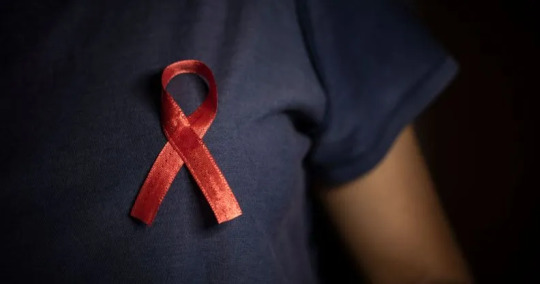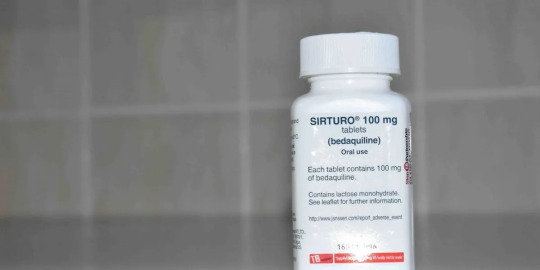#Vehicle Recycling Growth
Explore tagged Tumblr posts
Text
Vehicle Recycling Market Share, Sales Channels and Overview Till 2030
TheVehicle Recycling Market was valued at USD 86.8 billion in 2023-e and will surpass USD 159.5 billion by 2030; growing at a CAGR of 9.1% during 2024 - 2030. As the automotive industry continues to grow, so does the number of vehicles that reach the end of their life cycle. This has given rise to a burgeoning market: vehicle recycling. The vehicle recycling market not only addresses the issue of waste management but also plays a significant role in conserving resources and reducing environmental impact. In this blog, we will explore the dynamics, benefits, and future prospects of the vehicle recycling market.
Understanding Vehicle Recycling
Vehicle recycling involves dismantling end-of-life vehicles (ELVs) to recover valuable parts and materials. This process includes the removal of reusable components, the extraction of recyclable materials such as metals, and the proper disposal of hazardous substances. The goal is to maximize the reuse of vehicle parts and minimize waste, contributing to a circular economy.
Get a Sample Report: https://bit.ly/3LNEtIo
Market Dynamics
Growth Drivers
Environmental Regulations: Stringent environmental regulations and policies are driving the growth of the vehicle recycling market. Governments worldwide are implementing laws to ensure proper disposal and recycling of ELVs to reduce environmental pollution.
Resource Conservation: Recycling vehicles conserves natural resources by reducing the need for raw materials. Metals like steel, aluminum, and copper, which are extensively used in vehicle manufacturing, can be recovered and reused, decreasing the demand for mining and extraction.
Economic Benefits: The vehicle recycling industry generates significant economic value. Recycled materials are often cheaper than virgin materials, reducing production costs for manufacturers. Additionally, the sale of reusable parts provides revenue streams for recycling businesses.
Challenges
Complexity of Recycling Process: Vehicles are composed of numerous materials, including metals, plastics, glass, and rubber, making the recycling process complex. Efficiently separating and processing these materials requires advanced technology and expertise.
Market Fragmentation: The vehicle recycling market is fragmented, with numerous small and medium-sized enterprises (SMEs) operating alongside larger players. This fragmentation can lead to inconsistent standards and practices across the industry.
Technological Advancements: Keeping up with technological advancements in vehicle design and materials can be challenging for recyclers. Newer vehicles often incorporate advanced materials and technologies that require specialized recycling processes.
Benefits of Vehicle Recycling
Environmental Impact
Vehicle recycling significantly reduces environmental pollution. By recycling metals and other materials, the industry lowers greenhouse gas emissions associated with mining and manufacturing. Additionally, proper disposal of hazardous substances like batteries and fluids prevents soil and water contamination.
Resource Efficiency
Recycling vehicles promotes resource efficiency by recovering valuable materials that can be used in new production. This reduces the strain on natural resources and decreases the energy consumption and environmental impact of extracting and processing raw materials.
Economic Opportunities
The vehicle recycling market creates numerous economic opportunities. Recycling businesses generate revenue from the sale of recycled materials and reusable parts. Moreover, the industry provides employment opportunities, contributing to local economies.
Future Prospects
The future of the vehicle recycling market looks promising, driven by technological advancements and increasing environmental awareness. Here are some key trends shaping the future:
Technological Innovations
Innovations in recycling technology are enhancing the efficiency and effectiveness of vehicle recycling. Advanced sorting and separation technologies, robotics, and artificial intelligence (AI) are improving the accuracy and speed of the recycling process. These advancements are expected to drive further growth in the market.
Circular Economy
The shift towards a circular economy is gaining momentum. Manufacturers are increasingly designing vehicles with recyclability in mind, using materials that can be easily recovered and reused. This approach not only supports sustainability but also aligns with consumer preferences for environmentally friendly products.
Get an insights of Customization: https://bit.ly/3LNv7vY
Collaboration and Standardization
Collaboration between stakeholders, including manufacturers, recyclers, and policymakers, is crucial for the growth of the vehicle recycling market. Standardizing recycling practices and implementing uniform regulations can ensure consistent quality and efficiency across the industry.
Conclusion
The vehicle recycling market is a vital component of the global push towards sustainability. By addressing the challenges and leveraging technological advancements, the industry can continue to thrive and contribute to environmental conservation, resource efficiency, and economic growth. As consumers and businesses alike recognize the importance of responsible vehicle disposal, the future of vehicle recycling looks bright, paving the way for a more sustainable and eco-friendly automotive industry.
0 notes
Text
The Best News of Last Week
1. ‘We are just getting started’: the plastic-eating bacteria that could change the world

In 2016, Japanese scientists Oda and Hiraga published their discovery of Ideonella sakaiensis, a bacterium capable of breaking down PET plastic into basic nutrients. This finding marked a shift in microbiology's perception, recognizing the potential of microbes to solve pressing environmental issues.
France's Carbios has successfully applied bacterial enzyme technology to recycle PET plastic waste into new plastic products, aligning with the French government's goal of fully recycling plastic packaging by 2025.
2. HIV cases in Amsterdam drop to almost zero after PrEP scheme

According to Dutch AIDS Fund, there were only nine new cases of the virus in Amsterdam in 2022, down from 66 people diagnosed in 2021. The organisation claimed that 128 people were diagnosed with HIV in Amsterdam in 2019, and since 2010, the number of new infections in the Dutch capital has fallen by 95 per cent.
3. Cheap and drinkable water from desalination is finally a reality

In a groundbreaking endeavor, engineers from MIT and China have designed a passive solar desalination system aimed at converting seawater into drinkable water.
The concept, articulated in a study published in the journal Joule, harnesses the dual powers of the sun and the inherent properties of seawater, emulating the ocean’s “thermohaline” circulation on a smaller scale, to evaporate water and leave salt behind.
4. World’s 1st drug to regrow teeth enters clinical trials

The ability to regrow your own teeth could be just around the corner. A team of scientists, led by a Japanese pharmaceutical startup, are getting set to start human trials on a new drug that has successfully grown new teeth in animal test subjects.
Toregem Biopharma is slated to begin clinical trials in July of next year after it succeeded growing new teeth in mice five years ago, the Japan Times reports.
5. After Decades of Pressure, US Drugmaker J&J Gives Up Patent on Life-Saving TB Drug

In what can be termed a huge development for drug-resistant TB (DR-TB) patients across large parts of the world, bedaquiline maker Johnson and Johnson said on September 30 (Saturday) that it would drop its patent over the drug in 134 low- and middle-income countries (LMICs).
6. Stranded dolphins rescued from shallow river in Massachusetts
youtube
7. ‘Staggering’ green growth gives hope for 1.5C, says global energy chief

The prospects of the world staying within the 1.5C limit on global heating have brightened owing to the “staggering” growth of renewable energy and green investment in the past two years, the chief of the world’s energy watchdog has said.
Fatih Birol, the executive director of the International Energy Agency, and the world’s foremost energy economist, said much more needed to be done but that the rapid uptake of solar power and electric vehicles were encouraging.
---
That's it for this week :)
This newsletter will always be free. If you liked this post you can support me with a small kofi donation here:
Buy me a coffee ❤️
Also don��t forget to reblog this post with your friends.
11K notes
·
View notes
Text
Future Brisbane
So, at the end of “Surprise”, we get to see future-Brisbane, maybe 25-30 years in the future? A grown-up Bluey brings her child to visit her parents’ house, so her kid can blast Dad with tennis balls like she did.


Compare future Brisbane with current Brisbane

First of all, nice to see the house hasn’t fallen down, Dad and Mum have kept it in good repair (thanks Hammerbarn) and it now has solar panels, as do a number of other homes.
Many things have changed:
An incredible increase in land use density; multiple medium and tall towers (like in downtown) now are common in the suburban area. Assuming this means much more multifamily housing.
Roads much less dominant/conspicuous in the hills
Look how the trees have grown.
The communications towers on the hilltops are less conspicuous.
Three waste/recycling bins (addressing the green waste recycling issue)
Drone transport (for deliveries?)
Some things haven’t changed:
Sky is blue. That’s good.
The whole area hasn’t flooded from rising sea levels…
Adult Bluey drives, or at least is using a private vehicle, rather than something like an on-demand transit service. (Maybe the drone deliveries mean less congestion on the roads but traffic has never been a big issue in Bluey-Brisbane 😉)


Inside the house is not crazy-futuristic, some electronic gadgets, like a Roomba. (I was expecting more high-tech like a Mr. Fusion from “Back to the Future” but that’d probably be by the kitchen or by the garbage wheelie-bins.)
I know my parents still have the same stereo they had 30+ years ago, and much of the same furniture.
Note that 30 years of progress has not improved how Roombas dock with their charging stations.
Some other new tech in the front hall:
Electronic digital picture frames with weird floating connections to the wall.
Wifi router thing on ceiling
Spherical thing (maybe something like an Alexa?)
New comfy chair, replacing the red one.

Density Increase
The increase in land use density in the Brisbane suburbs where the Heelers live is one of those dreams of land use planners; more density in already developed areas is generally considered a plus, assuming the infrastructure can accommodate it. Higher density means more people in a given area making public transit more efficient and reducing costs to serve the homes with utilities.
Is that kind of growth possible in only a few decades? Yes, here’s a North American example… this is where I grew up, in the early 1980s it looked like this in Mississauga, ON around the Square One shopping centre…

…and now it looks like this in the 2020s.

So that’s growth over about 30-40 years, which is a little longer than how much time has apparently elapsed in “Bluey”, but not a lot. It’s possible, and this kind of thing can snowball / accelerate once initial projects get underway.
Public opposition (NIMBY) can prevent this kind of thing from occurring in many cities.
79 notes
·
View notes
Text
Excerpt from this story from Canary Media:
The Trump administration has ordered federal agencies to “immediately pause the disbursement of funds” under the landmark federal climate and energy laws passed during the Biden administration, a move that will throw tens of billions of dollars of lawfully designated federal funding into limbo — and one that is likely to be challenged in court.
The pause on disbursing funds appropriated through the Inflation Reduction Act and the Bipartisan Infrastructure Law is laid out in a section of a broader executive order on “Unleashing American Energy,” entitled “Terminating the Green New Deal.”
The order calls on federal agencies to halt all disbursements under the two laws while they “review their processes, policies, and programs for issuing grants, loans, contracts, or any other financial disbursements of such appropriated funds for consistency with the law.” It gives federal agencies 90 days to report to the director of the Office of Management and Budget and the head of the National Economic Council on how the frozen spending aligns with the administration’s overall energy goals.
Incoming administrations often call for temporary freezes and reviews of federal agency actions ordered by their predecessors. But it is far less common for executive orders to make federal agencies halt spending on programs mandated in laws passed by Congress.
The order is likely to cause significant confusion for the many government entities and private-sector companies that have been awarded funds, Alex Kania, director of equity research at Marathon Capital, an investment banking firm focused on clean infrastructure, wrote in a Tuesday research note.
“This would obviously stop any unappropriated funding, but the halt on any disbursement suggests a broader move, such as stopping payment of funds that had already been approved and previously contracted,” Kania wrote. “Bottom line, these executive orders inject a lot of uncertainty into federal clean energy policy, and a turn to the courts seems likely.”
Kania noted that the executive order is unlikely to impact tax credits created by the Inflation Reduction Act.
Tax credits — not loans, grants, and contracts — make up the majority of the hundreds of billions in federal spending expected to flow from the Inflation Reduction Act, which Trump has called for rescinding entirely. But Republicans in Congress and many industry groups have warned that ending the tax credits would undermine the economic development and job growth the incentives have spurred largely in Republican districts.
Industry observers have been expecting the Trump administration to halt spending that federal agencies have yet to allocate, but the text of the executive order leaves unclear whether the freeze will also target spending that has already been “obligated,” or legally committed under contract. A Biden administration official told reporters on Friday that $96.7 billion in clean energy grants, or about 84 percent of grant funding from the Inflation Reduction Act, has been obligated.
That includes tens of billions in loans and loan guarantees issued by the Department of Energy’s Loan Programs Office, which under the Biden administration supported electric-vehicle and battery factories, battery-mineral mining, processing, and recycling facilities, distributed solar and battery deployments, EV-charging projects, alternative aviation fuel operations, clean hydrogen production plants, and nuclear reactors. Of the approximately $107.57 billion Biden’s LPO awarded across across 53 deals, just under $60.62 billion consists of loans and guarantees that have been finalized and obligated, according to a Friday update from the DOE.
Obligated funding also includes the $27 billion for so-called “green bank” programs created by the Inflation Reduction Act, which help fund climate projects that struggle to secure private-sector loans; about $3 billion of a $5 billion grant program for electric and zero-emissions school buses; and around $5 billion in Climate Pollution Reduction Grants for states, local governments, tribes, and territories to finance plans to reduce greenhouse gas emissions and air pollution.
Other grant-funded projects at risk include the Bipartisan Infrastructure Law’s $7 billion clean hydrogen hub program, for which only a fraction has been obligated, and the more than $22 billion in grants to fund power grid projects across the country, of which more than $10 billion has been awarded to utilities, companies, and state, local, and tribal governments but just a smaller slice has been obligated. Only portions of the IRA’s $8.8 billion in home-efficiency and electrification rebates and incentives and a $9.5 billion rural electrification program have been obligated.
The executive order also singles out for immediate pause the $7.5 billion in EV-charging infrastructure grants created by the Bipartisan Infrastructure Law.
Of the $5 billion segment of those grants earmarked for large charging hubs along major highways and transit corridors, “my guess is about two-thirds of those are under contract with states,” said Loren McDonald, chief analyst of EV-charging data firm Paren. “And I would assume that those that are under contract could not be clawed back. How could you basically promise money for an applicant, they start construction, and then you pull it back?”
And in general, analysts say it would be difficult for Trump to undo obligated awards made by the Biden administration.
17 notes
·
View notes
Text
*Help Sonola Segun Create a Sustainable Future: Support My Recycling Business Initiative*
Hello, my name is Sonola Segun, and I’m a passionate public health graduate living with sickle cell disease. Over the years, I’ve faced numerous health challenges, including long hospital stays, financial burdens, and the emotional loss of loved ones, including friends and even a pet. Despite these hardships, I’ve remained determined to advocate for the betterment of our environment and public health. Today, I’m excited to share a project that is close to my heart—a sustainable recycling business that aims to reduce waste, promote environmental health, and educate our community.
*Why I’m Starting This Recycling Business*
Living with sickle cell disease has given me firsthand experience of how environmental factors can significantly impact health. Pollution, improper waste management, and unsafe living conditions can exacerbate chronic health conditions, especially for those with vulnerable immune systems. I understand the importance of a clean and healthy environment, which is why I’m committed to creating a business that not only helps reduce waste but also educates local schools, businesses, and community groups on the critical need for recycling, sustainability, and proper waste management practices.
*What I’ve Accomplished So Far*
I’ve made significant strides in planning and laying the foundation for this business. Here’s what I’ve already covered:
- *Permits & Licenses*
- *Business License*
- *Collection Containers*
- *Scales*
- *Environmental Permits*
- *Sorting Equipment*
- *Flyers & Brochures*
- *Employee Training Materials*
However, to bring this project to life, I need your support. Starting and operating a business comes with significant upfront costs, and I’m currently facing financial challenges in securing the necessary equipment, vehicle, and manual sorting operations. This is where your contribution can make all the difference.
*How You Can Help*
Here’s a breakdown of the key items I need financial assistance with to make this business a reality:
1. *Manual Sorting Costs:*$390
2. *Shredders (to reduce the size of recyclable materials):* $3,000
3. *Truck/Van (for collecting and transporting recyclables):* $2,000
*Total Required: $5,390*
These resources are vital to the efficient operation of my recycling business, allowing me to collect more recyclables, expand the program, and provide educational materials that will inspire our community to embrace sustainable practices.
*The Impact of Your Support*
By contributing to this campaign, you are not just supporting a business—you are investing in a cleaner, healthier, and more sustainable future for everyone. Your donation will help:
- *Create local jobs*and support economic growth
- **Raise awareness** about the importance of recycling and environmental health
- **Improve waste management practices** in our community
- **Help mitigate environmental damage** caused by improper waste disposal
Every donation, no matter how small, will have a lasting impact and move us closer to a cleaner, greener world. Your generosity will allow me to continue advocating for public health and environmental protection, making a real difference in the lives of people living with chronic conditions and the community as a whole.
*Join Me in Creating a Greener Future*
I am passionate about making a positive change for our environment and public health. With your support, we can work together to build a cleaner, more sustainable future. Every step we take toward reducing waste and promoting recycling matters, and your contribution can help make that happen.
Thank you for taking the time to read my story and for considering supporting my mission. Your help means the world to me, and it will have a lasting impact on the future of our community and planet.
Sincerely,
Sonola Segun
Public Health Advocate & Sustainability Entrepreneur
https://gofund.me/8bd729e2
#gofundme#gofundme campaign#indiegogo#indiegogo campaign#kickstarter project#andrew garfield#david tennant#jensen ackles#michael sheen#nicholas alexander chavez#tumblr fyp#fypシ#fyp#blog en español#book blog#ask blog
2 notes
·
View notes
Text

Creating a Space Station
Name and Location:
Name of the space station
Orbital location (e.g., around a planet, moon, or in deep space)
Any unique features or characteristics of the location
Background and Purpose:
Brief history and reasons for the station's construction
Primary purpose or mission of the station (e.g., research, colonization, defense, trade, mining, etc.)
Key organizations or entities involved in its establishment
Design and Structure:
Overview of the station's architectural design and layout
Different modules or sections of the station (e.g., living quarters, research labs, docking bays, etc.)
Key engineering feats or technological advancements used in its construction
Size and Population:
Dimensions of the space station (length, width, height)
Estimated population and demographics (humans, aliens, robots, etc.)
Capacity for expansion and accommodating future growth
Systems and Resources:
Life support and Resource systems: Air generation and filtration, Water purification and recycling, Waste management, Artificial gravity, Temperature and air pressure control, Radiation protection, Fire suppression systems, Medical supplies and tools, Food production, Maintenance and Repair tools and facilities
Energy source and storage: Solar power, Nuclear fusion, Advanced batteries, Fusion reactors, Harvesting solar flares
Living Quarters and Facilities
Description of residential areas (individual quarters, communal spaces, recreational facilities)
Water block
Medical facilities and healthcare services available
Education and training facilities for residents and their families
Scientific Research and Laboratories
Different types of laboratories and equipment available depending on the stations’s mission
Astronomical observatories, Biological Laboratory, Climate and Environmental Studies, Planet observation and Research, Rock Analysis Facility
Transportation and Docking:
Docking bays for spacecraft and shuttle services
Transportation systems within the station (elevators, maglev trains, etc.)
Maintenance and repair facilities for visiting spacecraft
Security and Defense:
Security measures and protocols
Defense systems against potential threats: Shielding technology, Defensive satellites & space drones, Cloaking Technology, Countermeasures (flares, countershots, etc), Intruder Detection Systems, Surveillance and AI protection, Protection by AI or Hacker from outside hacks, Self-Repair System
Security personnel and their roles and ranks
Communication and Information Systems:
Communication technology used for inter-station and interstellar communication
Data storage and retrieval systems
Access to networks anddatabases
Trade and Economy:
Types of goods and resources traded on the station
Cargo of the space station
Economic systems
Currency used
Marketplaces within the station
Social and Cultural Aspects:
Societal norms and cultural diversity among the station's residents
Recreational and entertainment facilities (cinemas, sports arenas, etc.)
Events or celebrations unique to the station's culture
Governance and Administration:
Station hierarchy and governing bodies (administrators, council, etc.)
Laws and regulations specific to the station
Interactions with external governing entities (planetary governments, interstellar alliances, etc.)
Exploration and Discovery:
Expeditions or missions launched from the station
Discoveries made during exploration and sample gathering efforts
Spacecrafts and vehicles associated with the station's exploration activities
Environmental Considerations:
Measures taken to mitigate the effects of microgravity or radiation on residents' health
Environmental controls and simulations for recreating gravity and natural environments
Preservation of ecosystems and biodiversity on the station (if applicable)
Emergency Response and Crisis Management:
Protocols for handling emergencies (fires, system failures, medical emergencies, etc.)
Emergency evacuation plans and escape pods
Training programs for emergency response teams
Relations with Other Space Stations or Entities:
Collaborative projects or joint initiatives with other space stations
Trade agreements or diplomatic relations with neighboring stations or colonies
Conflict resolution mechanisms for inter-station disputes
Notable Individuals or Figures:
Prominent leaders from the station
Accomplishments and contributions of notable residents
Astronauts, scientists, or pioneers who have called the station home
Challenges and Risks:
Environmental and technological risks faced by the station
Political and social tensions within the station's community
External threats and conflicts affecting the station's stability
Future Expansion and Development:
Plans for future expansion and upgrades (where are they gonna get the resources for this?)
Integration of new technologies, scientific advancements into the station's infrastructure
Long-term goals for the station
33 notes
·
View notes
Text
Tree Loppers in Melbourne: A Comprehensive Guide to Tree Care and Maintenance

Melbourne, known for its stunning gardens and lush green spaces, is a city that thrives on its natural beauty. Maintaining this greenery, however, requires expertise and care, particularly when it comes to managing trees. Tree lopping is an essential service for both residential and commercial properties, ensuring that trees remain healthy, safe, and aesthetically pleasing. In this guide, we'll explore the importance of tree loppers Melbourne, what services they offer, and how to choose the right professional for your needs.
Understanding Tree Lopping
Tree lopping involves the trimming of tree branches and limbs to manage growth, improve tree health, or enhance the appearance of the tree. Unlike tree pruning, which is more about the careful and selective removal of specific branches to promote healthy growth, lopping can be more extensive and may involve cutting large sections of the tree. While both practices are crucial for tree care, lopping is typically employed when trees have grown too large, are posing a safety risk, or need reshaping.
The Importance of Tree Lopping in Melbourne
1. Safety
One of the primary reasons for tree lopping is safety. Overgrown branches can pose a significant risk, especially during Melbourne's stormy seasons. Falling branches can damage property, vehicles, and even pose a danger to people. Regular tree lopping helps mitigate these risks by removing potentially hazardous limbs.
2. Tree Health
Tree lopping can also contribute to the overall health of the tree. Removing dead or diseased branches prevents the spread of disease and allows the tree to allocate its resources more effectively. This can result in a healthier, more robust tree.
3. Aesthetic Appeal
Well-maintained trees enhance the visual appeal of your property. Tree loppers can shape and trim trees to create a more pleasing landscape. Whether you're looking to create a specific aesthetic or simply maintain a neat and tidy garden, professional tree lopping can help achieve your vision.
4. Property Value
Healthy, well-maintained trees can significantly boost the value of your property. Potential buyers are often attracted to properties with beautiful, mature trees, making tree care an important aspect of property maintenance.
Services Offered by Tree Loppers in Melbourne
Tree loppers in Melbourne offer a range of services to cater to different needs:
1. Tree Trimming and Pruning
This service involves the selective removal of branches to improve tree structure, promote healthy growth, and enhance aesthetics. Regular pruning is essential for young trees to establish a strong framework and for mature trees to maintain their health and appearance.
2. Tree Removal
In cases where a tree is dead, diseased beyond repair, or poses a significant safety risk, tree removal may be necessary. Tree loppers have the expertise and equipment to safely remove trees, ensuring minimal impact on the surrounding area.
3. Stump Grinding
After a tree is removed, the stump can be an unsightly and inconvenient obstacle. Stump grinding services eliminate the stump, allowing you to reclaim the space for other uses.
4. Emergency Tree Services
Storms and strong winds can cause significant damage to trees, resulting in broken branches or even uprooted trees. Emergency tree services provide prompt response and safe removal of hazardous trees and limbs.
5. Mulching and Chipping
Tree loppers often offer mulching and chipping services to recycle tree waste into useful mulch. This can be used to improve soil health and retain moisture in your garden.
Choosing the Right Tree Loppers Melbourne
Selecting a qualified and reputable tree lopper is crucial for ensuring the safety and health of your trees. Here are some tips to help you make the right choice:
1. Check Qualifications and Insurance
Ensure the tree lopper is certified and has the necessary qualifications. In Australia, arborists should hold a minimum of a Certificate III in Arboriculture. Additionally, confirm that they have adequate insurance coverage to protect against any damage or accidents that may occur during the job.
2. Ask for References
Reputable tree loppers should be able to provide references from previous clients. Contact these references to inquire about their experience and satisfaction with the services provided.
3. Obtain Multiple Quotes
It's wise to get quotes from several tree loppers to compare prices and services. Be wary of quotes that are significantly lower than others, as this may indicate a lack of experience or proper insurance.
4. Inquire About Equipment and Techniques
Ask about the equipment and techniques the tree lopper will use. Modern, well-maintained equipment and up-to-date techniques are essential for safe and effective tree lopping.
5. Read Reviews and Testimonials
Check online reviews and testimonials to gauge the reputation of the tree lopper. Websites like Google Reviews and local business directories can provide valuable insights into the quality of their work.
Conclusion
Tree loppers play a vital role in maintaining the beauty and safety of Melbourne's green spaces. Whether you need routine tree trimming, emergency tree removal, or specialized services like stump grinding, professional tree loppers have the expertise to handle the job. By choosing a qualified and reputable tree lopper, you can ensure your trees remain healthy, your property stays safe, and your garden looks its best. Embrace the benefits of tree lopping and contribute to the vibrant greenery that makes Melbourne such a beautiful city.
2 notes
·
View notes
Text
Melamine Market is Expected to Grow at a CAGR of 3.87% during the forecast period until 2032

The melamine market has witnessed remarkable growth and diversification in recent years, propelled by a myriad of factors shaping the global landscape. Melamine, a nitrogen-rich organic compound, finds extensive applications across various industries, including construction, automotive, textiles, packaging, and food service. Its unique properties, such as high flame resistance, thermal stability, durability, and chemical inertness, have made melamine a versatile and indispensable material in numerous manufacturing processes and end-use applications.
One of the primary drivers of the melamine market is the increasing demand from the construction industry. Melamine-based products, such as melamine formaldehyde resins and melamine foam insulation, are widely used in construction applications such as laminates, decorative panels, flooring, countertops, and insulation materials. With rapid urbanization, infrastructure development, and construction activities on the rise globally, the demand for melamine-based construction materials is expected to surge.
Read Full Report: https://www.chemanalyst.com/industry-report/melamine-market-812
Moreover, the automotive sector represents another significant market for melamine, driven by the increasing demand for lightweight, durable, and aesthetically appealing materials. Melamine-based components, such as automotive interior trim, dashboard panels, door panels, and decorative parts, offer excellent properties such as scratch resistance, color stability, and surface finish, thereby enhancing the overall aesthetics and functionality of vehicles. As automotive manufacturers focus on improving fuel efficiency, reducing emissions, and enhancing passenger comfort and safety, the demand for melamine-based automotive materials is projected to grow substantially.
Furthermore, the textiles industry presents lucrative opportunities for the melamine market, particularly in the manufacturing of melamine-formaldehyde resins for textile finishing and coating applications. Melamine resins impart crease resistance, wrinkle resistance, and color fastness to textiles, thereby enhancing their durability, appearance, and performance. With the growing demand for high-quality textiles, home furnishings, and apparel, the demand for melamine-based textile additives is expected to increase.
Additionally, the packaging industry represents a significant market for melamine, driven by the rising demand for lightweight, durable, and eco-friendly packaging materials. Melamine-based products, such as melamine-formaldehyde resins and melamine foam packaging, offer excellent properties such as thermal insulation, moisture resistance, and shock absorption, making them ideal for packaging applications such as food packaging, electronics packaging, and industrial packaging. As consumers increasingly prioritize sustainability, recyclability, and environmental friendliness, the demand for melamine-based packaging solutions is expected to grow.
Despite the promising outlook, the melamine market faces challenges and constraints, including fluctuating raw material prices, regulatory compliance issues, and environmental concerns related to formaldehyde emissions. However, industry stakeholders are actively addressing these challenges through initiatives focused on product innovation, sustainability, and regulatory compliance. Moreover, strategic partnerships, mergers, and acquisitions are driving consolidation and market expansion in the melamine industry.
In conclusion, the melamine market is poised for continued growth and innovation, driven by its versatile applications, inherent properties, and compatibility with evolving market trends. By leveraging its strengths in construction, automotive, textiles, packaging, and other sectors, the melamine market can navigate towards a more sustainable and prosperous future, ensuring its relevance and competitiveness in the global marketplace.
About us:
ChemAnalyst is an online platform offering a comprehensive range of market analysis and pricing services, as well as up-to-date news and deals from the chemical and petrochemical industry, globally.
Being awarded ‘The Product Innovator of the Year, 2023’, ChemAnalyst is an indispensable tool for navigating the risks of today's ever-changing chemicals market.
The platform helps companies strategize and formulate their chemical procurement by tracking real time prices of more than 400 chemicals in more than 25 countries.
ChemAnalyst also provides market analysis for more than 1000 chemical commodities covering multifaceted parameters including Production, Demand, Supply, Plant Operating Rate, Imports, Exports, and much more. The users will not only be able to analyse historical data but will also get to inspect detailed forecasts for upto 10 years. With access to local field teams, the company provides high-quality, reliable market analysis data for more than 40 countries.
Contact us:
420 Lexington Avenue, Suite 300
New York, NY
United States, 10170
Email-id: [email protected]
Mobile no: +1-3322586602
#Melamine#Melaminemarket#Melaminemarketsize#Melaminemarkettrends#Melaminemarketgrowth#Melaminemarketshare#Melaminedemand
2 notes
·
View notes
Text
The impact of Education on Sustainable Development.
youtube
Sustainable development has become a buzzword in recent years, and for a good reason. As our world grapples with environmental, social, and economic challenges, the concept of sustainable development offers a promising path towards a brighter and more equitable future. In this blog, we'll explore what sustainable development is, why it's essential, and how individuals, communities, and governments can contribute to this transformative journey.
Understanding Sustainable Development:
youtube
Sustainable development is a holistic approach to improving our quality of life while preserving the planet's resources for future generations. It's about finding a balance between economic growth, social progress, and environmental protection. The term was popularized in 1987 by the Brundtland Commission, which defined it as "development that meets the needs of the present without compromising the ability of future generations to meet their own needs."
Key Principles of Sustainable Development:
youtube
Environmental Stewardship: Preserving and restoring the natural environment, reducing pollution, and conserving biodiversity are essential components of sustainable development.
Social Equity: Sustainable development promotes inclusive growth, ensuring that everyone has access to basic needs such as clean water, food, education, and healthcare.
Economic Prosperity: While protecting the environment and promoting social equity, sustainable development also aims to foster economic growth and create opportunities for all.
The Importance of Sustainable Development:
Environmental Preservation: As climate change, pollution, and habitat destruction threaten our planet's health, sustainable development offers a roadmap to mitigate these issues.
Social Inclusion: It seeks to reduce inequality and ensure that no one is left behind, addressing poverty and improving access to education and healthcare.
Economic Stability: By encouraging responsible economic practices, sustainable development helps create long-term economic stability, reducing the risk of financial crises.
How to Contribute to Sustainable Development:
youtube
Reduce, Reuse, Recycle: Small everyday actions, like reducing waste and conserving resources, can have a big impact.
Support Sustainable Businesses: Choose products and services from companies committed to environmentally and socially responsible practices.
Advocate for Change: Raise awareness and demand policy changes that promote sustainable development at the local, national, and global levels.
Invest in Renewable Energy: Support the transition to clean, renewable energy sources to reduce greenhouse gas emissions.
Community Engagement: Get involved in local initiatives, volunteer, and work with your community to address sustainability issues.
Sustainable development is not just a buzzword; it's a call to action. It represents a vision for a better, more equitable, and environmentally responsible future. By understanding its principles and taking small, everyday actions, we can all contribute to this important global effort. Sustainable development isn't just a goal; it's a journey, and we must all be willing travelers on this path towards a brighter future.
Key Aspects of Sustainable Development:
Energy Transition: Sustainable development encourages the transition from fossil fuels to renewable energy sources like solar, wind, and hydroelectric power. This shift not only reduces carbon emissions but also creates jobs in the green energy sector.
youtube
Responsible Consumption: Reduce your ecological for being mindful of what you consume. Buy locally-produced goods to support the community and reduce the carbon footprint associated with transportation. Embrace the "circular economy" concept by repairing and reusing items when possible.
youtube
Eco-friendly Transportation: Opt for public transportation, carpooling, biking, or walking when possible to reduce your carbon emissions. Electric and hybrid vehicles are also more eco-friendly alternatives.
youtube
Conservation of Ecosystems: Support and participate in conservation efforts in your area. Protecting and restoring natural ecosystems, including forests, wetlands, and marine environments, is crucial for biodiversity and climate mitigation.
youtube
More Ways to Contribute to Sustainable Development:
youtube
Education and Awareness: Stay informed about sustainability issues and share this knowledge with others. Organize workshops, seminars, or awareness campaigns in your community to educate people about the importance of sustainable living.
Green Building and Sustainable Architecture: Encourage or adopt green building practices, which use energy-efficient designs and materials. Sustainable architecture can significantly reduce energy consumption and the environmental impact of construction.
Waste Management: Practice responsible waste management by composting organic waste and recycling. Encourage local authorities to improve recycling programs and reduce single-use plastics.
Water Conservation: Conserve water by fixing leaks, using water-saving appliances, and adopting practices like rainwater harvesting. Promote efficient water use in your community and support policies for responsible water management.
Advocacy and Activism: Join or support organizations and movements advocating for sustainable policies and practices. Lobby for sustainable development in your region and at higher government levels.
youtube
Sustainable development is a multifaceted and ongoing journey. By focusing on the key aspects of sustainable development and incorporating these additional strategies into your lifestyle and advocacy efforts, you can make a meaningful contribution towards building a more resilient, equitable, and environmentally responsible world. Remember, every small action counts, and collectively, we can bring about transformative change for a sustainable
2 notes
·
View notes
Text
Wayne Enterprises' Green Growth Challenge!

"Sustainability isn't just a choice; it's a responsibility we all share. As we navigate the entrepreneurial world, we must remember that our actions today shape the world of tomorrow.
We live in an era where sustainability isn't an option but an imperative. It's the force that drives visionaries and trailblazers to make real, positive change. Just look at Tesla Inc., revolutionizing the automobile industry with sustainable electric vehicles, reducing carbon emissions. Think about The Ocean Cleanup, a venture founded by Boyan Slat, combating ocean pollution by cleaning up the Great Pacific Garbage Patch.
Now, it's your turn to make a difference. Welcome to the Wayne Enterprises' Green Growth Challenge,' where your entrepreneurial spirit meets sustainability.
Task Description: Participants will be given existing startups known for their sustainability efforts and propose strategies to scale them further. Your task is to develop a sustainability-focused strategy to enhance the startup's impact.
Startup Options:
Impossible Foods: Scaling up plant-based meat substitutes to reduce carbon emissions.
Ecolife Recycling: Expanding electronic waste recycling efforts to reduce e-waste.
Grocery Delivery Service (e.g., Instacart, FreshDirect): Making grocery delivery services more sustainable, reducing waste.
Urban Farming Startup (e.g., AeroFarms): Scaling vertical farming to reduce food miles and water usage.
Renewable Energy Startup (e.g., Sunrun): Expanding residential solar panel installations to promote clean energy.
Deliverables:
1. Presentation (PPT): Create a presentation outlining your sustainability-focused strategy. Include startup background, analysis, proposed strategy, implementation plan, and expected impact.
2. Report: Develop a detailed report expanding on the presentation. Include in-depth analysis, research findings, and a clear execution roadmap for the sustainability strategy.
3. Additional deliverables are encouraged.
2 notes
·
View notes
Text

How should I use creatine for muscle growth?
Yo, it's rather simple.
For the first week of supplementation ingest 5g of creatine alongside a tall 500-600ml glass of water 5x a day, hydration is key for optimal results here 'cause creatine requires water to access the muscle cell, this process is called THE LOADING PHASE, where you're accelerating the timeframe required for our body to reach maximum levels of creatine in the muscle cell.

After the first week, just keep ingesting 5g of creatine daily, and keep your water intake rather high to stabilize the saturated levels, there's no need to go crazy with hydration, just track the color of your pee, it needs to stay fairly clear and colorless.
If you're peeing plutonium your hydration sucks and you're wasting money on creatine.
That's it, but if you wanna learn a bit more, allow me to get REAL NERDY.
By supplementing with creatine you're going to saturate the levels of creatine inside the muscle cell's cytoplasm/sarcoplasm, creatine alongside glycogen are the main fuels for ANAEROBIC CONTRACTION, the type of contraction conjured by the muscle cell when it is met with significant resistance, movements that require STRENGTH.
Creatine simply occupies space inside the muscle cell sarcoplasm so it can be available for use, making the muscle cell membrane stretch and get bigger, sarcoplasmic hypertrophy.
This isn't WATER RETENTION, water is just the vehicle of creatine inside the cell, creatine needs to be bound to water to enter the cell.
But wait? Why so many people complain of water retention when they use creatine?
Poor hydration, creating is sapping water from other systems, and what happens when your hydration sucks? You retain water 'cause the cells can't afford to recycle it.
So optimal creatine use is all about having optimal hydration alongside it.
That extra fuel alongside the cell, will provide you with more reps hence more strength simply because there's MORE FUEL THERE.
Your body will always try to use CLEAN ENERGY, by emphasizing AEROBIC CONTRACTION, the mitochondria in the muscle cell use oxygen, lipids, and sugars to produce ATP to fuel low-intensity contractions, contractions that have a low threshold of resistance.
Anaerobic contraction, on the other hand, doesn't use oxygen at all, it's a kind of emergency mechanism exclusive for when the muscle cell is challenged with higher thresholds of resistance because when you contract a muscle against resistance it gets damaged.
The cell releases a cascade of enzymes to ferment and breakdown the glycogen and creatine in the muscle cell to produce tons of ATP and a powerful contraction, but that enzymatic process also releases all sorts of nasty shit that turns the cell's cytoplasm into an acidic environment damaging that cell.
In response to that, the body sends all sorts of metabolites to that cell that turned acidic, in order to reestablish balance within that environment, and guess what? more stuff inside the cell = more stretching of its membrane = SARCOPLASMIC HYPERTROPHY= bigger muscles.
Now, two paragraphs ago you might have got triggered thinking "yo, if I do one rep against resistance the muscle cell doesn't exactly get damaged", and you're right, but that's because all that gunk (metabolites) that stretched out the muscle cell is still there fighting acidity off, that's why over time, you get more efficient in cranky more and more reps, and that's why over time, you don't get soreness unless you go berzerker.
One last thing before I let you go, remember that I said that anaerobic contraction is an emergency mechanism? It's because the body wants to preserve itself, it wants to maintain homeostasis, so it will use THE LEAST amount of muscle cells required to execute the movement you're imposing against it.
And that's my G, is why you need to go AS HEAVY AS IT'S SAFELY POSSIBLE, you can't give your body the option of not recruiting everything it got if your goal is hypertrophy.
You need HEAVY sets that conjure the biggest baddest already optimized-for-strength muscle cells, and high rep sets that conjure the teeny tiny lazy muscle cells that always had an excuse to not do shit.
Yo, if you survived all the way down here, YOU'RE A FREAKING NEEEERD DUDE HAHAHA
It's time to stop reading about how to make muscles bigger and GO GET SOME BRUH!
BANG IRON!
Big KISS
THE POTATO MAN

#creatine#supplements#weight lifting#weight lifting supplements#kemetic dreams#fitness#fitness motivation#the potato man#lift heavy#exercise
4 notes
·
View notes
Text
Aluminum Market: Products, Applications & Beyond
Aluminum is a versatile element with several beneficial properties, such as a high strength-to-weight ratio, corrosion resistance, recyclability, electrical & thermal conductivity, longer lifecycle, and non-toxic nature. As a result, it witnesses high demand from industries like automotive & transportation, electronics, building & construction, foil & packaging, and others. The high applicability of the metal is expected to drive the global aluminum market at a CAGR of 5.24% in the forecast period from 2023 to 2030.

Aluminum – Mining Into Key Products:
Triton Market Research’s report covers bauxite, alumina, primary aluminum, and other products as part of its segment analysis.
Bauxite is anticipated to grow with a CAGR of 5.67% in the product segment over the forecast years.
Bauxite is the primary ore of aluminum. It is a sedimentary rock composed of aluminum-bearing minerals, and is usually mined by surface mining techniques. It is found in several locations across the world, including India, Brazil, Australia, Russia, and China, among others. Australia is the world’s largest bauxite-producing nation, with a production value of over 100 million metric tons in 2022.
Moreover, leading market players Rio Tinto and Alcoa Corporation operate their bauxite mines in the country. These factors are expected to propel Australia’s growth in the Asia-Pacific aluminum market, with an anticipated CAGR of 4.38% over the projected period.
Alumina is expected to grow with a CAGR of 5.42% in the product segment during 2023-2030.
Alumina or aluminum oxide is obtained by chemically processing the bauxite ore using the Bayer process. It possesses excellent dielectric properties, high stiffness & strength, thermal conductivity, wear resistance, and other such favorable characteristics, making it a preferable material for a range of applications.
Hydrolysis of aluminum oxide results in the production of high-purity alumina, a uniform fine powder characterized by a minimum purity level of 99.99%. Its chemical stability, low-temperature sensitivity, and high electrical insulation make HPA an ideal choice for manufacturing LED lights and electric vehicles. The growth of these industries is expected to contribute to the progress of the global HPA market.
EVs Spike Sustainability Trend
As per the estimates from the International Energy Agency, nearly 2 million electric vehicles were sold globally in the first quarter of 2022, with a whopping 75% increase from the preceding year. Aluminum has emerged as the preferred choice for auto manufacturers in this new era of electromobility. Automotive & transportation leads the industry vertical segment in the studied market, garnering $40792.89 million in 2022.
In May 2021, RusAl collaborated with leading rolled aluminum products manufacturer Gränges AB to develop alloys for automotive applications. Automakers are increasingly substituting stainless steel with aluminum in their products owing to the latter’s low weight, higher impact absorption capacity, and better driving range.
Also, electric vehicles have a considerably lower carbon footprint compared to their traditional counterparts. With the growing need for lowering emissions and raising awareness of energy conservation, governments worldwide are encouraging the use of EVs, which is expected to propel the demand for aluminum over the forecast period.
The Netherlands is one of the leading countries in Europe in terms of EV adoption. The Dutch government has set an ambitious goal that only zero-emission passenger cars (such as battery-operated EVs, hydrogen FCEVs, and plug-in hybrid EVs) will be sold in the nation by 2030. Further, according to the Canadian government, the country’s aluminum producers have some of the lowest CO2 footprints in the world.
Alcoa Corporation and Rio Tinto partnered to form ELYSIS, headquartered in Montréal, Canada. In 2021, it successfully produced carbon-free aluminum at its Industrial Research and Development Center in Saguenay. The company is heralding the beginning of a new era for the global aluminum market with its ELYSIS™ technology, which eliminates all direct GHG emissions from the smelting process, and is the first technology ever to emit oxygen as a byproduct.
Wrapping Up
Aluminum is among the most widely used metals in the world today, and is anticipated to underpin the global transition to a low-carbon economy. Moreover, it is 100% recyclable and can retain its properties & quality post the recycling process.
Reprocessing the metal is a more energy-efficient option compared to extracting the element from an ore, causing less environmental damage. As a result, the demand for aluminum in the sustainable energy sector has thus increased. The efforts to combat climate change are thus expected to bolster the aluminum market’s growth over the forecast period.
#Aluminum Market#aluminum#chemicals and materials#specialty chemicals#market research#market research reports#triton market research
4 notes
·
View notes
Text
Sustainable Business Practices in Dubai: What You Need to Know
Dubai, the bustling city in the United Arab Emirates (UAE), has long been known for its lavish lifestyle, iconic skyscrapers, and luxury shopping destinations. However, in recent years, Dubai has also made significant strides in adopting sustainable business practices.

Sustainable business practices refer to those business practices that aim to reduce the negative impact on the environment and society while also maintaining economic growth. In Dubai, sustainable business practices are gaining momentum, and businesses of all sizes are making efforts to adopt them. Here's what you need to know about sustainable offshore business setup in Dubai.
Government Initiatives
The Dubai government has taken several steps to promote sustainable business practices in the city. In 2012, the Dubai Supreme Council of Energy launched the Dubai Integrated Energy Strategy 2030, which aims to reduce energy consumption by 30% by 2030. The government has also launched several initiatives to promote renewable energy, such as the Mohammed bin Rashid Al Maktoum Solar Park, which is one of the largest solar parks in the world.
Green Building Standards
Dubai has implemented green building standards to encourage the construction of environmentally sustainable buildings. The Dubai Municipality has introduced the Green Building Regulations and Specifications, which provide guidelines for the design, construction, and operation of green buildings. The regulations cover aspects such as energy efficiency, water conservation, waste management, and indoor air quality.
Also read about more: How to start a limited liability company in Dubai?
Sustainable Transportation
Dubai has invested heavily in sustainable transportation, including electric vehicles and public transportation systems. The city has introduced a fleet of electric buses and taxis, and the Dubai Metro is one of the most extensive driver less metro systems in the world. Additionally, the city has implemented a bike-sharing program to encourage residents to cycle and reduce their carbon footprint.
Waste Management
Dubai generates a significant amount of waste, and the government has implemented several initiatives to manage it sustainably. The Dubai Municipality has introduced a waste segregation program, where households and new company setup in Dubai are required to separate their waste into recyclable and non-recyclable waste. The municipality also operates several recycling centers and waste-to-energy plants to convert waste into energy.
Sustainable Tourism
Tourism is a significant contributor to Dubai's economy, and the city is making efforts to promote sustainable tourism. Dubai has launched the Dubai Sustainable Tourism Initiative, which aims to promote sustainable tourism practices and reduce the negative impact of tourism on the environment and society.
Conclusion
In conclusion, sustainable business practices are gaining momentum in Dubai, and businesses need to embrace them to stay competitive and contribute to the city's sustainable growth. The Dubai government has taken several initiatives to promote sustainable business practices, and businesses need to align themselves with these initiatives. Adopting sustainable business practices not only helps businesses reduce their impact on the environment Recorporate also helps them attract eco-conscious customers and investors.
If you need any assistance in setting up a business or you need more information about the sustainable business practices in Dubai, you may contact us on +971-58-586-5477 and email us via [email protected].
Original Source: https://bit.ly/3z62K5X
2 notes
·
View notes
Text
Flat Steel Market Growth Revenue Size, Trends and Factors, Share Analysis & Forecast Till 2032
Flat Steel Market, a fundamental material in various industries, has witnessed substantial growth in demand globally. As a versatile and cost-effective steel product, it plays a critical role in the construction, automotive, machinery, and energy sectors. Its application in manufacturing, infrastructure development, and consumer goods has made it indispensable in modern economies.
Flat Steel Market Size was valued at USD 483.70 Billion in 2023. The Flat Steel industry is projected to grow from USD 512.72 Billion in 2024 to USD 817.20 Billion by 2032, exhibiting a compound annual growth rate (CAGR) of 6.00% during the forecast period (2024 - 2032)
Understanding Flat Steel and Its Applications
Flat steel refers to a range of steel products that are rolled from slabs, producing a flat surface. The major categories of flat steel include:
Hot-Rolled Steel: Used in construction, heavy machinery, and pipelines.
Cold-Rolled Steel: Known for its smooth finish and precision, it is widely utilized in automotive manufacturing and appliances.
Coated Steel: Often galvanized or painted, it is used in roofing, cladding, and furniture.
Flat steel’s diverse applications stem from its properties like malleability, durability, and recyclability. Its relevance spans numerous industries:
Construction: Flat steel is critical in creating beams, bars, and roofing components.
Automotive: It is used in body panels, chassis, and structural components.
Energy: Flat steel is employed in manufacturing wind turbines, pipelines, and energy storage systems.
Appliances: Consumer goods like refrigerators, washing machines, and ovens rely on flat steel for casing and structural components.
Key Market Drivers
Several factors are propelling the growth of the flat steel market:
Urbanization and Infrastructure Development
Rapid urbanization in developing nations is driving demand for flat steel in construction. Governments worldwide are investing heavily in infrastructure projects, such as roads, bridges, and smart cities, bolstering the market.
Automotive Industry Growth
The automotive sector is a major consumer of flat steel. With the shift towards lightweight and electric vehicles, manufacturers are increasingly using high-strength flat steel to enhance vehicle efficiency and safety.
Renewable Energy Expansion
The transition towards renewable energy sources has boosted demand for flat steel. Wind turbines, solar panels, and related infrastructure require large quantities of high-quality flat steel.
Rising Demand for Consumer Goods
The expanding middle class and their increasing disposable income have led to higher demand for home appliances, further fueling the flat steel market.
Challenges in the Flat Steel Market
Despite its robust growth, the flat steel market faces several challenges:
Volatile Raw Material Prices
Steel production heavily depends on iron ore and coking coal. Fluctuating prices of these raw materials can impact the profitability of flat steel producers.
Environmental Concerns
The steel industry is a significant contributor to global carbon emissions. Stricter regulations and the need for sustainable practices pose challenges for manufacturers, pushing them to invest in cleaner production technologies.
Competition from Substitutes
Materials like aluminum and composites are gaining popularity in industries like automotive due to their lightweight and corrosion-resistant properties, posing competition to flat steel.
Geopolitical Issues
Trade tensions and tariffs on steel imports and exports can disrupt supply chains and affect market dynamics.
Emerging Trends in the Flat Steel Market
Advancements in Manufacturing Technologies
Innovative technologies such as Electric Arc Furnaces (EAFs) and hydrogen-based steelmaking are revolutionizing production processes, making them more efficient and eco-friendly.
Growing Demand for High-Strength Steel
High-strength flat steel is becoming popular in the automotive and construction sectors for its enhanced durability and reduced weight.
Focus on Sustainability
Manufacturers are adopting sustainable practices, including recycling steel and reducing energy consumption. Green steel initiatives, driven by renewable energy, are gaining momentum.
Digitalization in Steel Production
The integration of AI, IoT, and automation in production processes is optimizing operations and improving product quality, driving growth in the flat steel market.
Regional Market Insights
Asia-Pacific
The Asia-Pacific region dominates the flat steel market, led by countries like China and India. Rapid industrialization, urbanization, and infrastructure development projects are primary growth drivers.
Europe
Europe's stringent environmental regulations are pushing manufacturers to adopt sustainable practices. The automotive industry's focus on lightweight materials also supports demand.
North America
The U.S. construction and automotive industries are significant consumers of flat steel. Infrastructure modernization initiatives further enhance market growth.
Middle East and Africa
The rising need for construction materials in growing economies and investments in energy projects bolster flat steel demand in these regions.
Future Outlook
The global flat steel market is expected to grow steadily in the coming years, driven by industrial development, technological advancements, and a push for sustainability. According to industry analysts, the market is projected to achieve a CAGR of 4–6% over the next decade.
MRFR recognizes the following Flat Steel Companies - ArcelorMittal,POSCO,Jiangsu Shagang Group,ChinaSteel,Jianlong Group,ThyssenKrupp AG,JFE Steel Corporation,Albawardi Steel Industries,NIPPON STEEL CORPORATION,Tata Steel,Nucor Corporation,SABIC,Hyundai Steel,AGIS,Voestalpine AG,Severstal Russian Steel,NLMK,Essar Steel,ShaabanSteel,ATI,CITIC LIMITED,Baosteel Group,Hebei Puyang Iron and Steel Group,SSAB AB,SAIL,METINVEST HOLDING,LLC,JSW
Flat steel remains a cornerstone of modern infrastructure and industrial applications. While the market faces challenges, the combination of technological advancements, sustainability initiatives, and increasing demand across sectors ensures its relevance. By adapting to emerging trends and addressing environmental concerns, the flat steel industry is well-positioned to thrive in the evolving global landscape.
Related Reports
Steel Market - https://www.marketresearchfuture.com/reports/steel-market-5465 Green Steel Market - https://www.marketresearchfuture.com/reports/green-steel-market-11286 APAC Steel Market - https://www.marketresearchfuture.com/reports/apac-steel-market-12449 Stainless Steel Market - https://www.marketresearchfuture.com/reports/stainless-steel-market-16145 Carbon Steel Market - https://www.marketresearchfuture.com/reports/carbon-steel-market-10298 Aerospace Steel Market - https://www.marketresearchfuture.com/reports/aerospace-steel-market-20690 High Strength Steel Market - https://www.marketresearchfuture.com/reports/high-strength-steel-market-5638 Structural Steel Market - https://www.marketresearchfuture.com/reports/structural-steel-market-7490 Iron Steel Market - https://www.marketresearchfuture.com/reports/iron-steel-market-11958
0 notes
Text
Excerpt from this story from the Nation of Change:
The U.S. Environmental Protection Agency (EPA) has unveiled a monumental $4.3 billion funding initiative targeting climate pollution and environmental justice across 30 states. This announcement comes as part of the Climate Pollution Reduction Grants program, funded by the Inflation Reduction Act. EPA Administrator Michael Regan emphasized the importance of community-driven solutions to tackle climate change, stating, “President Biden believes in the power of community-driven solutions to fight climate change, protect public health, and grow our economy.”
The Climate Pollution Reduction Grants program, supported by the Inflation Reduction Act, aims to significantly reduce greenhouse gas emissions while promoting environmental justice and economic growth. The selected projects are estimated to cut greenhouse gas emissions by the equivalent of 971 million metric tons by 2050, which is comparable to the energy consumption of 5 million homes over 25 years.
Transportation
One of the major allocations includes $500 million dedicated to decarbonizing freight transportation at the ports of Los Angeles and Long Beach. This funding will support the installation of electric charging equipment, the deployment of zero-emission freight vehicles, and the conversion of cargo handling equipment to reduce emissions.
Energy
Michigan is set to receive $129 million to accelerate its renewable energy projects. This initiative aims to streamline the siting, zoning, and permitting of renewable energy infrastructure, helping the state achieve its goal of 60% renewable energy by 2035.
Industry
Pennsylvania will benefit from $396 million to reduce greenhouse gas emissions from industrial facilities, including cement and asphalt plants. This effort is part of a broader initiative, RISE PA, to target industrial sector emissions and promote cleaner industrial practices.
Agriculture
Nebraska will receive $307 million for sustainable agriculture and energy efficiency projects. These funds will support climate-smart agriculture practices, reduce agricultural waste, improve energy efficiency in commercial and industrial facilities, and deploy solar panels and electrified irrigation wells.
Commercial and residential buildings
The northeastern states of Connecticut, Massachusetts, Rhode Island, New Hampshire, and Maine will collectively receive $450 million to promote the adoption of cold-climate heat pumps and water heaters. These technologies are crucial for improving energy efficiency in homes and commercial buildings, particularly in regions with harsh winters.
Waste management
The grants will also support various waste management projects aimed at reducing pollution and promoting recycling and waste reduction initiatives. These efforts are vital for minimizing the environmental impact of waste and improving public health.
11 notes
·
View notes
Text
High Performance Plastics Market Size, Share, and Industry Analysis
Growing Demand in Automotive, Aerospace, and Electronics Sectors Fuels Expansion of the High-Performance Plastics Market.

The High Performance Plastics Market size was valued at USD 27.75 billion in 2023 and is expected to reach USD 61.72 billion by 2032, growing at a CAGR of 9.29% over the forecast period of 2024-2032.
The global high-performance plastics market is driven by rising demand for lightweight, durable, and heat-resistant materials across various industries. High-performance plastics (HPPs) offer exceptional mechanical strength, chemical resistance, and thermal stability, making them essential in aerospace, automotive, electronics, healthcare, and industrial applications. The increasing adoption of electric vehicles (EVs), medical devices, and advanced manufacturing processes is further fueling market expansion. Additionally, sustainability initiatives and advancements in polymer technology are driving the development of recyclable and bio-based high-performance plastics.
Key Players in the High-Performance Plastics Market
Dow (ENGAGE, ELITE)
Kraton Corporation (Cariflex, Kraton G)
DuPont (Zytel, Delrin)
Ryan Plastics Ltd. (High-Performance PEEK, PPS Components)
RTP Company (RTP 300 Series, RTP 200 Series)
Solvay (Ryton, KetaSpire)
Eurostar Engineering Plastics (Starflam, Staramide)
LyondellBasell Industries Holdings B.V. (Purell, Hostalen)
Kuraray Co. Ltd (Genestar, Kurarister)
Toray Industries (Toraycon, Torelina)
Future Scope and Emerging Trends
The high-performance plastics market is evolving with a strong focus on sustainability, innovation, and regulatory compliance. Manufacturers are investing in bio-based and recyclable HPPs to reduce environmental impact while maintaining high strength and thermal resistance. In the automotive and aerospace industries, the shift toward lightweight materials is enhancing fuel efficiency and performance. Additionally, the electronics sector is witnessing a surge in demand for high-temperature-resistant plastics for 5G technology, semiconductors, and advanced circuit boards. With 3D printing and additive manufacturing gaining traction, HPPs are being increasingly used to create customized, high-strength components across various industries.
Key Points
Growing Adoption in Aerospace and Automotive: Lightweight plastics improving fuel efficiency and performance.
Sustainability Initiatives Driving Bio-Based HPPs: Increased focus on recyclable and eco-friendly materials.
Rising Demand in Electronics and 5G Infrastructure: High-temperature-resistant plastics supporting advanced technology.
Advancements in Additive Manufacturing: 3D printing enabling customized and durable plastic components.
Regulatory Compliance and Safety Standards: Stringent environmental and safety regulations influencing material choices.
Conclusion
The high-performance plastics market is set for strong growth, fueled by technological advancements, increasing demand for lightweight and durable materials, and sustainability-driven innovation. Companies investing in bio-based solutions, advanced manufacturing techniques, and high-strength polymer development will gain a competitive edge. As industries seek efficient and environmentally friendly alternatives, high-performance plastics will continue to redefine modern manufacturing and engineering applications worldwide.
Read Full Report: https://www.snsinsider.com/reports/high-performance-plastics-market-3673
Contact Us:
Jagney Dave — Vice President of Client Engagement
Phone: +1–315 636 4242 (US) | +44- 20 3290 5010 (UK)
#High Performance Plastics Market#High Performance Plastics Market Size#High Performance Plastics Market Share#High Performance Plastics Market Report#High Performance Plastics Market Forecast
0 notes